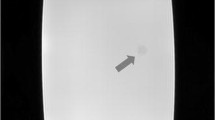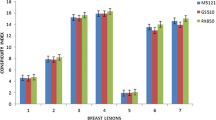Abstract
The properties of the human visual system (HVS) relevant to the diagnostic process are described after a brief introduction on the general problems and advantages of using soft copy for primary radiology interpretations. At various spatial and temporal frequencies the contrast sensitivity defines the spatial resolution of the eye-brain system and the sensitivity to flicker. The adaptation to the displayed radiological scene and the ambient illumination determine the dynamic range for the operation of the HVS. Although image display devices are determined mainly by state-of-the-art technology, analysis of the HVS may suggest technical characteristics for electronic displays that will help to optimize the display to the operation of the HVS. These include display size, spatial resolution, contrast resolution, luminance range, and noise, from which further consequences for the technical components of a monitor follow. It is emphasized that routine monitor quality control must be available in clinical practice. These image quality measures must be simple enough to be applied as part of the daily routine. These test instructions might also serve as elements of technical acceptance and constancy tests.
Similar content being viewed by others
References
Siegel E: Filmless radiology: How the Baltimore VA does it. Diagnostic Imaging (June): 54–66, 1997
Wandell BA: Foundations of Vision. Sunderland, MA, Sinauer Associates, 1995
Blackwell HR: Contrast Thresholds of the Human Eye. J Opt Soc Am 36:624–643, 1946
Barten PGJ: The effects of picture size and definition on perceived image quality. Proc SID 30(2):67–71, 1989
Muka E, Blume H, Daly S: Display of medical images on CRT soft-copy displays: A tutorial. Proc SPIE 2431:341–359, 1995
Chesters MS: Human Visual Perception and ROC Methodology in Medical Imaging. Phys Med Biol 37:1433–1476, 1992
Farrell JE, Benson BL, Haynie CR: Predicting Flicker Thresholds for Video Display Terminals. Proc SID 28(4):449–453, 1987
Bartleson CJ, Breneman EJ: Brightness perception in complex fields. J Opt Soc Am 57:953–957, 1967
Normann RA, Perlman I: The effects of background illumination on the photoresponses of red and green cones. J Physiol 286:491–507, 1987
Baxter B, Ravindra H, Normann RA: Changes in Lesion Detectability Caused by Light Adaptation in Retinal Photoreceptors. Invest Radiol 17:394–401, 1982
Westheimer G, Campbell FW: Light distribution in the image formed by the living human eye. J Opt Soc Am 52:1040–1045, 1962
Muka E: Personal communication
Lee H-C, Daly S, Van Metter RL: Visual optimization of radiographic tone scale. Proc SPIE 3036:118–129, 1997
Blume H: The ACR/NEMA Proposal for a Grey-Scale Display Function Standard. Proc SPIE 2707:344–359, 1996; and ACR/NEMA: Digital Imaging and Communications in Medicine (DICOM), Supplement 28: Grayscale Standard Display Function, Letter Ballot Text. Jan 25th. 1998
Hunt RWG: The Reproduction of Colour in Photography, Printing & Television. Tolworth, England, Fountain Press, 1987
Gindele EB, Gandhi BR, Shaffer SL: A non-linear CRT system simulation model. SID 91 Digest 785–788, 1991
Mertelmeier T, Kocher TE: Monitor simulations for the optimization of medical soft-copies. Proc SPIE 2707: 322–333, 1996
van Oekel JJ: Improving the Contrast of CRTs under Low Ambient Illumination with Graphite Coating. SID 95 Digest 427–430, 1995
Gindele EB, Shaffer SL: A Physical Optics CRT Faceplate Halation Model. SID 90 Digest 446–450, 1990
Gray JE, Lisk KG, Haddick DH et al: Test Pattern for Video Displays and Hard-Copy Cameras. Radiology 154:519–527, 1985
Roehrig H, Ji T-L, Browne M, et al: Signal-to-Noise Ratio and Maximum Information Content of Images Displayed by a CRT. Proc SPIE 1232:115–133, 1990
Blume H, Roehrig H, Ji T-L: High-Resolution, High-Brightness CRT Display Systems: Up-Date on State of the Art. SID 94 Digest 219–222, 1994
Blume H, Muka E: Hard-Copies for Digital Medical Images—An Overview. Proc SPIE 2413:206–241, 1995
Muka E, Mertelmeier T, Slone RM, et al: Impact of Phosphor Luminance Noise on the Specification of High-Resolution CRT Displays for Medical Imaging. Proc SPIE 3031:210–221, 1997
Frank MS, Jost RG, Molina PL: High-Resolution Computer Display of Portable, Digital, Chest Radiographs of Adults: Suitability for Primary Interpretation. AJR Am J Roentgenol 160:473–477, 1993
Bolle SR, Sund T, Størmer J: Receiver Operating Characteristic Study of Image Preprocessing for Teleradiology and Digital Workstation. J Digit Imaging 10:152–157, 1997
Badano A, Flynn MJ: Image Degradation by Glare in Radiologic Display Devices. Proc SPIE 3031:222–231, 1997
Author information
Authors and Affiliations
Rights and permissions
About this article
Cite this article
Mertelmeier, T. Why and how is soft copy reading possible in clinical practice?. J Digit Imaging 12, 3–11 (1999). https://doi.org/10.1007/BF03168621
Issue Date:
DOI: https://doi.org/10.1007/BF03168621




